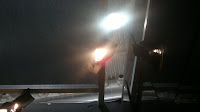liki liki design | Aliki
https://1.bp.blogspot.com/-lYioIB04UjU/V-PYCfMK2pI/AAAAAAAAKEY/eXy89hF1z1o4F_qeiAVnGV38iIHWZ-_iACK4B/s220/likiliki-logo-right-100x80.png

https://1.bp.blogspot.com/-lYioIB04UjU/V-PYCfMK2pI/AAAAAAAAKEY/eXy89hF1z1o4F_qeiAVnGV38iIHWZ-_iACK4B/s220/likiliki-logo-right-100x80.png
 Furthermore and particularly in the
case of "black stone" choosing a black-and-white lining of the
stands is not necessarily a good choice and lacks in sophistication, especially
when it is made of "material" ...Above all, the trade fair pavilion
lighting should interfere as little as possible with the lighting of the
exhibition stand itself. This is certainly not easy. Otherwise the context is
altered and no longer gives the exalted dimension that any natural stone requires
in order to show its magnificence.
Furthermore and particularly in the
case of "black stone" choosing a black-and-white lining of the
stands is not necessarily a good choice and lacks in sophistication, especially
when it is made of "material" ...Above all, the trade fair pavilion
lighting should interfere as little as possible with the lighting of the
exhibition stand itself. This is certainly not easy. Otherwise the context is
altered and no longer gives the exalted dimension that any natural stone requires
in order to show its magnificence.



liki liki LED lighting design: " kissimu 3"™table lamp by Aliki Polydor
Posted by liki liki design at 14:51
Labels: aliki polydor, kissimu 3 table lamp, LED lighting luminaire design, liki liki LED lighting design
Posted by liki liki design at 10:51
Labels: aliki polydor, colour rendering LED lighting, Exhibition space LED lighting, Lighting design churches, lighting design exhibition space, places of worship LED lighting, Santa Teresa Basilica
Posted by liki liki design at 15:26
Labels: aliki polydor, ambiance and mood design, liki liki LED lighting design services, set your scenarios
 |
| Umberto Bargellini | affresco | LED-lit test | liki liki design |
Posted by liki liki design at 22:22
Labels: liki liki and Art, liki liki design, liki liki design and artwork lighting, liki liki design e conservazione opere, liki liki e pigmenti, liki liki LED lighting design e CRI, places of worship LED lighting
Inevitabilmente si sente dire a proposito dell'illuminazione degli spazi espositivi come la luce, oltre alla sua capacità di estrarre ed esaltare il senso delle opere esposte, ha una notevole componelinte emozionale che mira a colpire la memoria del visitatore e a portare il suo interesse verso il discorso espositivo voluto dagli organizzatori della mostra.
 liki liki "limited
edition" luminaires are all the fruit of passion. Pure passion for creativity, for the bespoke, and particularly
for functionality. Versatile passion applied to high-technology, Solid State
Lighting, pure electronics, and a mix of
classical rigor and innovative spirit. Passion for functional objects escaping
from serial production and taking us into the realm of craftsmanship. Show you have flair by choosing the liki liki designer luminaires.
liki liki "limited
edition" luminaires are all the fruit of passion. Pure passion for creativity, for the bespoke, and particularly
for functionality. Versatile passion applied to high-technology, Solid State
Lighting, pure electronics, and a mix of
classical rigor and innovative spirit. Passion for functional objects escaping
from serial production and taking us into the realm of craftsmanship. Show you have flair by choosing the liki liki designer luminaires. Posted by liki liki design at 20:26
Labels: accent LED lighting, aliki polydor, ambiance LED, atcasa corriere della sera, Award Ecohitech 2010, contract, designer LED, LED luminaires, liki liki designer luminaires
There is still time to celebrate, even after the holidays...
Que la fete continue...
Posted by liki liki design at 18:23
Labels: aliki polydor, designer LED luminaire, diode and perfume, hospitality, interni, LED lighting project design, patanjali, technology and perfume, wellness, Winner Award Ecohitech 2010
Posted by liki liki design at 12:50
Labels: aliki polydor, bespoke LED lighting design, LED lighting design made to measure, LED lighting project design
Do you remember Napoleon?

Napoleon stayed in Verona during his first Italian campaign in 1797. The Battle of Rivoli, against the Austrians, was fought in the same year.
Verona’s left bank, Veronetta, as named by Napoleon himself, is the present location of liki liki studio and workshop.
“napo”™©2007 high-power LED table luminaire is a salute to this great strategist. “napo”™ offers 1400 lumen of natural light at 6500 Kelvin within its strong attire. It sits marvelously well on a Directoire piece of furniture or a contemporary console.
Posted by liki liki design at 12:01
Labels: aliki polydor, designer luminaire, history and LED technology, LED technology, liki liki design, napoleon
Posted by liki liki design at 11:00
Labels: aliki polydor, ambiance lighting, design, designer LED lighting, designer luminaire, floor lamp, LED table lamp, light architecture, lighting design, liki liki design, made in Italy, patanjali floor luminaire
Light beats ignorance.
Let's use it in its best form and with the best means while respecting the environment, the context and the people in it.
Aliki Polydor© 2007
Posted by liki liki design at 10:23
Labels: accent lighting, aliki polydor, architectural LED, eco-friendly, hospitality, light architecture, lighting, lighting design, museum lighting, nology trend, sustainability, technology trend, wellness
 |
| Bad lighting Marmomacc |
Posted by liki liki design at 15:48
Labels: abitare verona, accent lighting, ambiance lighting, light architecture, lighting design, marmomacc
original template by Ourblogtemplates.com 2008
Back to TOP